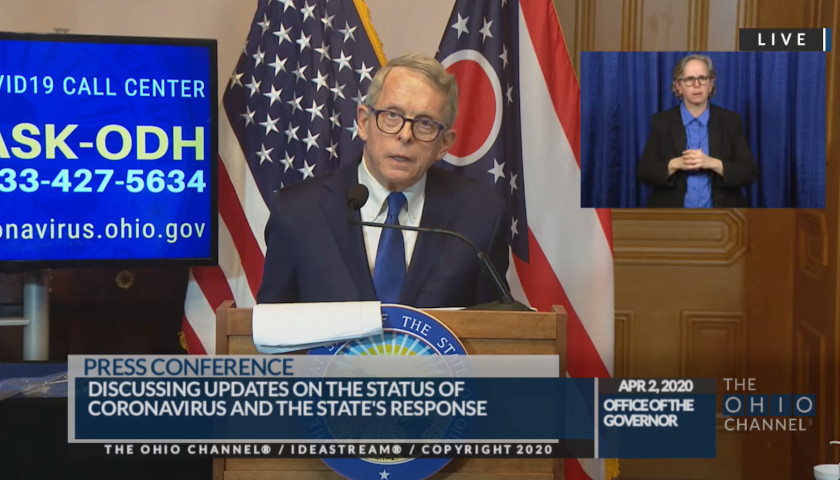Gov. Mike DeWine announced Thursday he will extended – both in duration and scope – Ohio’s “Stay-at-Home” Order until May 1. The original order was set to expire on Monday, April 6..
Ohio Department of Health Director Amy Acton signed the updated order on Thursday. The new stay-at-home measure will take effect midnight on Monday.
“We understand that this is tough – it is very difficult. But, I would not be making these decisions if it wasn’t a matter of life and death,” said Governor DeWine. “We have to keep this monster down. It’s not dead – it’s very much alive.”
Ohio is one of 38 states that are currently on a stay-at-home order, according to The Hill.
DeWine has been one of the most aggressive governors in combating the Chinese virus. In March, the governor closed down schools, banned mass gatherings, shut down restaurants and delayed Ohio’s presidential primary.
With the stay-at-home order extension, unemployment numbers will likely increase during April. In the last two weeks, 468,414 Ohioans have filed for unemployment benefits, which is more than all of the 364,603 jobless claims that happened in 2019.
To help Ohioans through the coronavirus pandemic, DeWine created an economic advisory board that “will help his administration work through the economic issues facing Ohio as the state looks toward the future,” according to the governor’s press release.
The peak of COVID-19 is expected to hit Ohio around April 19, the Institute for Health Metrics and Evaluation (IHME) model shows.
As of Friday, Ohio has 3,312 cases and 91 deaths, according to the state’s health department.
Updates to the new executive order include:
- The creation of a dispute resolution process for situations where two local health departments have come to a different conclusion on what is or is not an essential business.
- The requirement that essential businesses determine and enforce a maximum number of customers allowed in a store at one time. These businesses must ensure that people waiting to enter the stores maintain safe social distancing.
- Direction that travelers arriving to Ohio should self-quarantine for 14 days. Exceptions include persons who live and work in trans-border areas, health care workers, public health workers, public safety workers, transportation workers and designated essential workers. Visitors are instructed not to travel to Ohio if they are displaying symptoms, excepting in certain circumstances for medical care.
- The mandate that wedding receptions be limited to no more than 10 people.
- A clarification to close campgrounds with the exception where a camper or recreational vehicle in a campground serves as a citizen’s permanent residence and they are unable to secure safe alternative housing.
- The requirement that public swimming pools and swimming pools at private clubs or housing complexes close to prevent transmission of COVID-19. This does not apply to private residential pools.
- The clarification that retail garden centers can remain open but should determine and enforce a reduced capacity to keep customers and employees safe.
- The closure of day camps for children.
- The prohibition of organized youth and adult sports.
- The clarification that fishing is permitted if proper social distancing is practiced.
Watch the full press briefing here:
– – –
Zachery Schmidt is the digital editor of Star News Digital Media. If you have any tips, email Zachery at [email protected].
Photo “Mike DeWine” by The Ohio Channel.





